



Loganair was formed by Willie Logan on 1st February 1962 with a single Piper PA-23 Aztec as the air charter arm to his construction company. He had for many years used aircraft to visit various building sites for his company Duncan Logan (Contractors) ltd. Their biggest development being the Tay road bridge. When the air taxi company he regularly used went broke he bought it and the rest as they say is history. Sadly Willie was not to see his airline grow as he was killed four years later in a plane crash whilst flying with another airline. From that one aeroplane Loganair has grown to operate a present day fleet of 44 and with a staff of over 900 people it’s the UK’s largest regional airline flying both passenger and cargo services. Utilising many UK built aircraft in its 60 year history this is the story of the ups and downs of the self-branded ’Scotland’s Airline’.
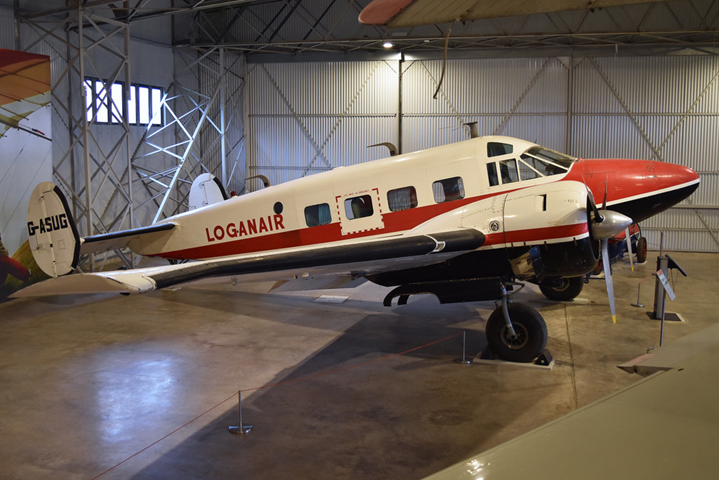
After starting charter services with the Aztec from Edinburgh, Loganair moved its operations to Glasgow and in 1964 the Aztec started flying newspapers to Stornoway in the Hebrides. By 1966 the company had obtained a licence to fly 15 passengers a week back from Stornoway to Glasgow on the newspaper run return flights, they were also awarded a Scottish Air Ambulance contract which they would hold for the following 39 years. In 1967 the airline added three Britten-Norman Islanders to its fleet allowing it to start services in the Orkney Islands. By 1970 the Islanders also served the Shetland Islands. To this day Loganair still fly the world’s shortest scheduled route between Westray and Papa Westray in the afore said Orkneys, a route of just 1.7 miles. With such a short route Loganair are actively looking into using electric powered aeroplanes to operate this service.
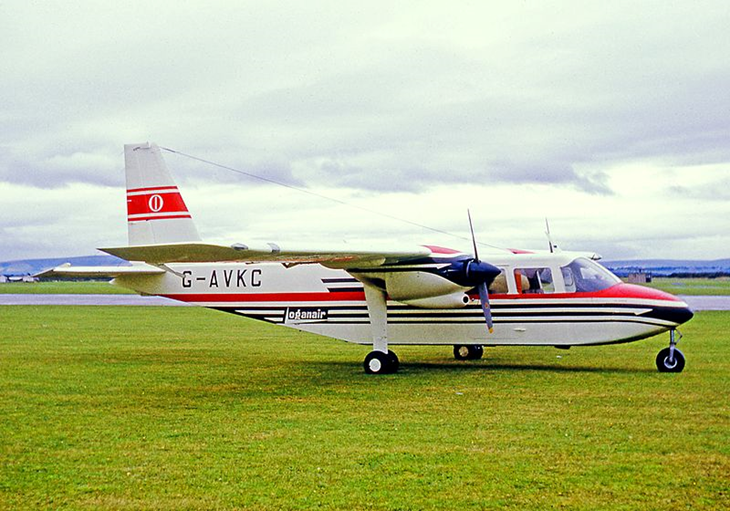
From 1973 the Islander’s bigger sibling the Trislander had also joined the airline and flew services for them for the next 10 years. Back in 1968 the airline became owned by the Royal Bank of Scotland and the bank would stay at the helm until 1983.With the airline owned by RBS it enabled the bank to offer the islanders of Lewis mobile banking services for the first time. 1980 saw the introduction of two Embraer EMB-110 Bandeirantes for use on flights for the oil industry.
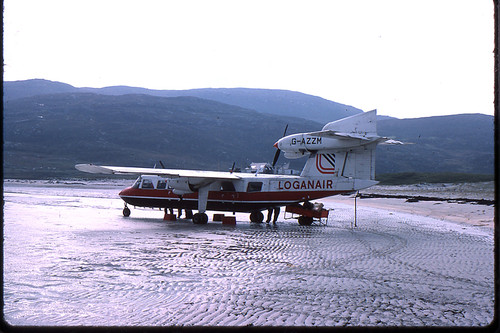
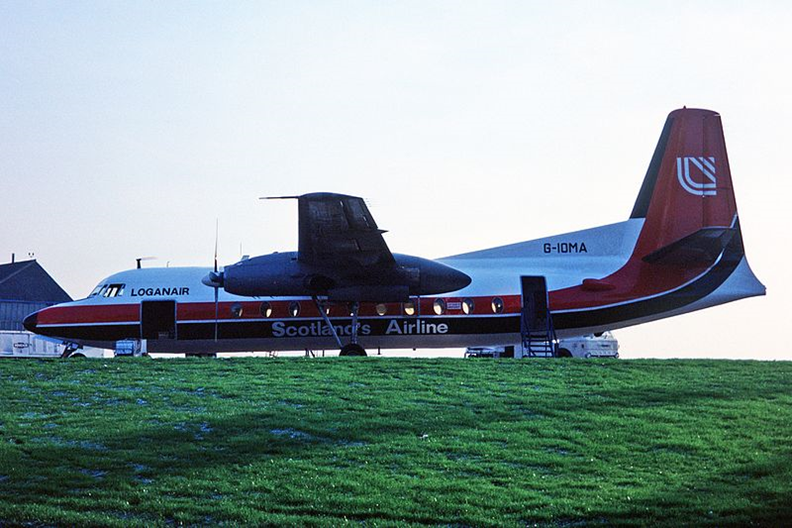
Towards the end of the bank’s ownership Short SD-330(1979-1984), SD-360 (1983-2004) and Fokker F-27 (1983-88) aircraft had been added to the Loganair fleet. The airline had previous experience of Short aircraft when it had operated Short Skyvans from 1969-74. These fleet upgrades enabled the airline to start services out of Manchester and by 1980 it was that airport’s second biggest operator.
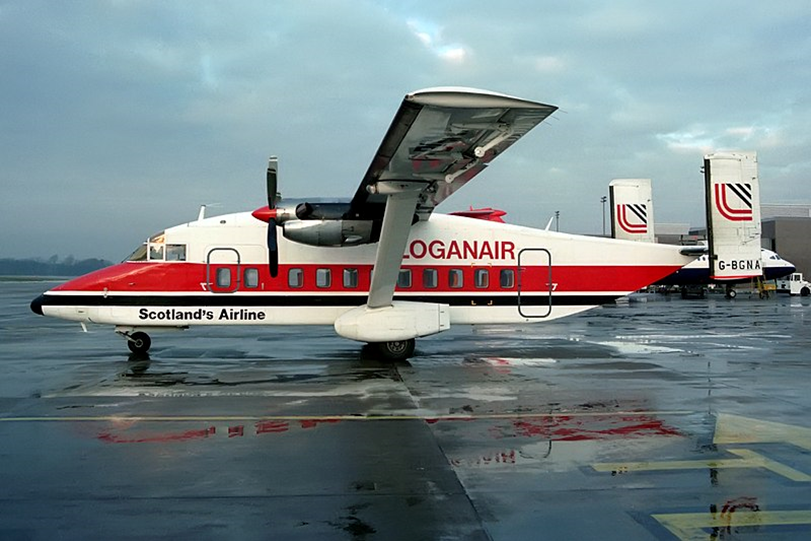
With the formation of British Airways in the early 1970’s a number of the old BEA routes to the Highlands and Islands were dropped by the new airline and these, including the services onto the beach at Barra, were taken over by Loganair. By the end of 1982 the airline was flying 15 planes on 20 routes. At the end of that financial year it posted a loss of £1 million, its fourth loss in a row.1983 saw the airline sold by RBS for less than £1 million to British Midland Airways and thus join the Airlines of Britain group which enabled a large route expansion throughout the UK. Following the new ownership the airline became a major player at airports such as Manchester and Southampton and returned to profit. 1988 would see the airline moving into jets when two BAe 146 aircraft joined the airline. They had been bought in the expectation that Loganair would get a licence on the Edinburgh and Glasgow to Gatwick routes which British Airways had dropped, however this was not to be with Flybe gaining the routes and so they were put to work on the key Edinburgh to Manchester route instead. For the summer of 1989 Loganair also used a leased in BAC 1-11.
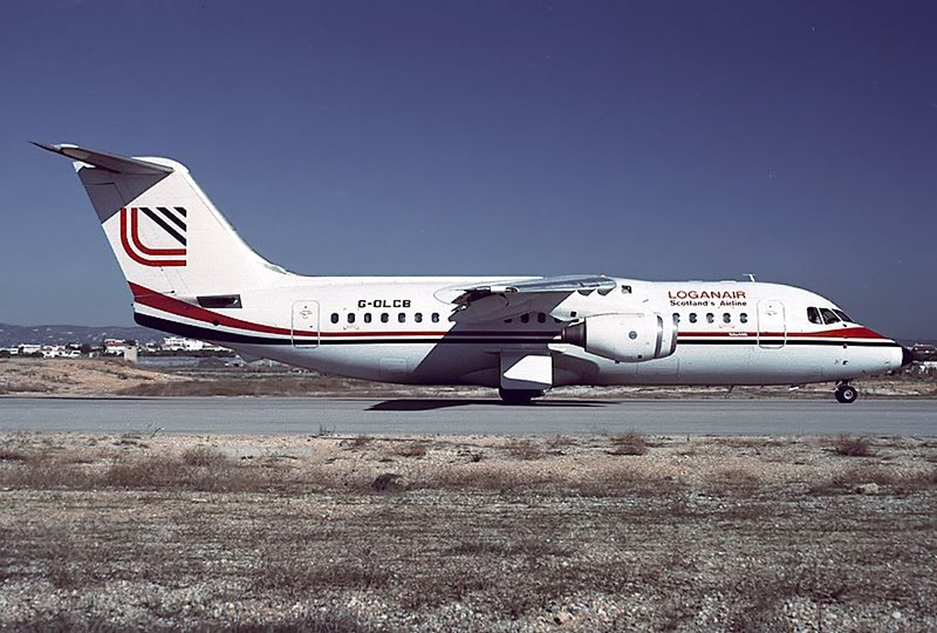
By 1990 the airline was operating a fleet of 18 aircraft made up of five different types serving a route network that now stretched into Europe with flights to Brussels. Charter flights to the sun were also flown out of Manchester. On some of its UK trunk routes such as Glasgow-Manchester the airline faced stiff competition from the likes of British Airways, some routes were lost others gained. In the early 1990s Loganair invested heavily in a new airliner being made at Prestwick by BAe. This was a development of the Jetstream 31, a larger aircraft called the Jetstream 41 carrying 29 passengers. Loganair ordered three the first of which arrived in November 1992.
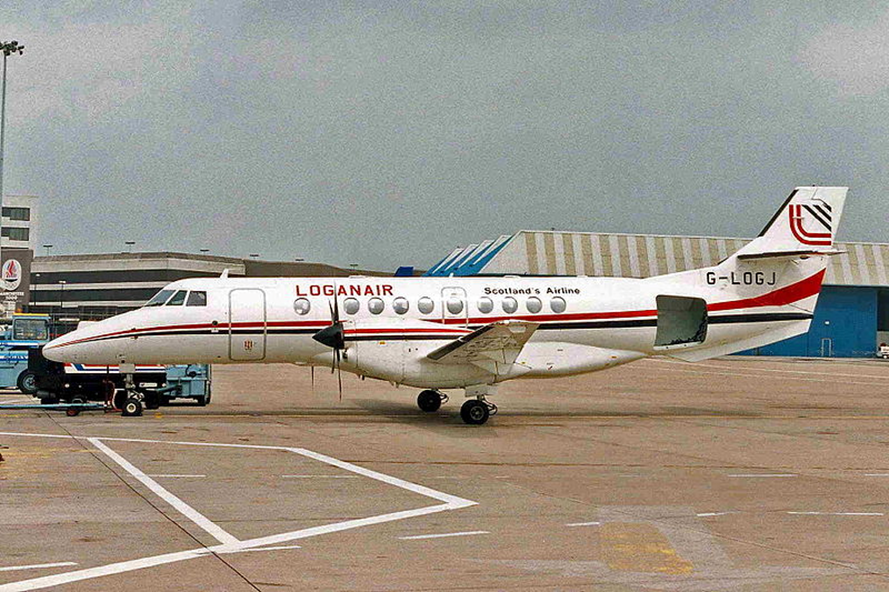
From 1991 the airline had already been operating the smaller Jetstream 31 so the transition to the new aircraft was quite easy. From that year they had also become operators of BAe’s ATP turboprop however in 1992 the two BAe 146 jets had left the fleet as part of a drastic cost cutting exercise following the downturn in aviation. Job cuts and transfers followed but it was not enough and with other airlines of the group also suffering the group was re structured and this saw staff and aircraft transferred from Loganair to Manx airlines along with all of the routes flown by Loganair that were not in the Scottish Highlands or Islands.
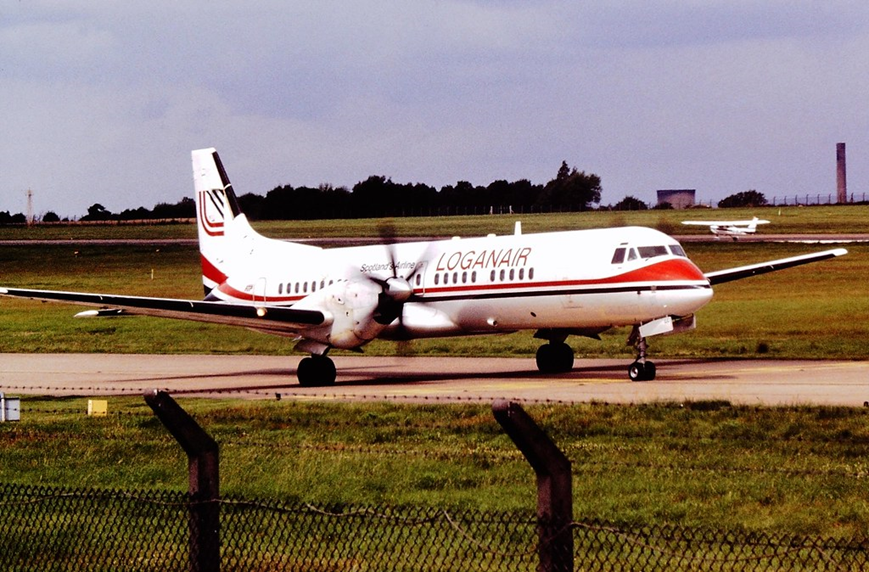
In 1994 Loganair became a franchise operator for British Airways and the fleet was painted in the BA house colours with the airline becoming part of the BA Express brand. So in just a few short years Loganair had gone from a thriving airline in its own right to a small regional airline flying under the colours of British Airways. This arrangement went on until 2008.
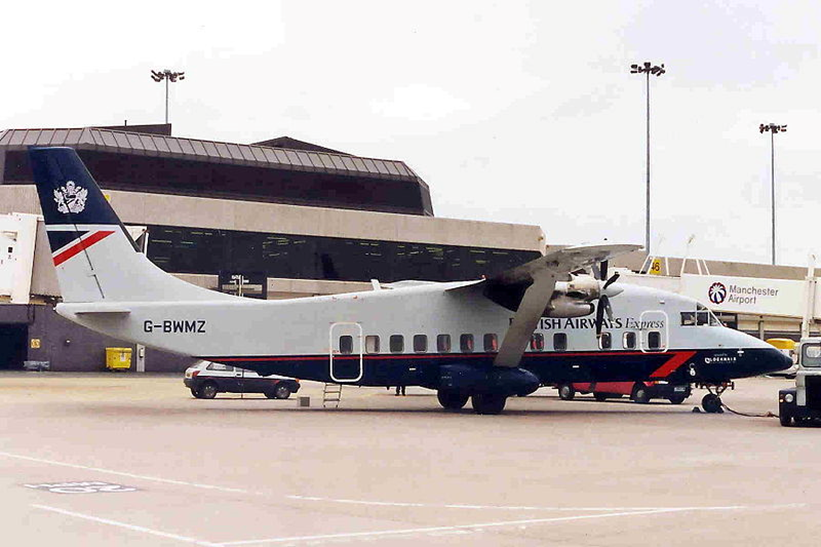
In 1997 there was a management led buy out of the company which continued to fly as a franchise operator for British Airways, some of its trunk routes however remained with British Regional Airlines (owned by BA). Loganair itself now owned and operated just six aircraft, five Islanders used in the Shetlands and Orkneys and one Twin Otter which served the Hebrides. From 1999 the Short 360s were slowly replaced by 34 seat SAAB 340s. As British Airways Express slowly gave up routes in Scotland Loganair acquired them but still operated them under British Airways colours as part of the franchise. By 2004 Loganair had all the Scottish routes back.
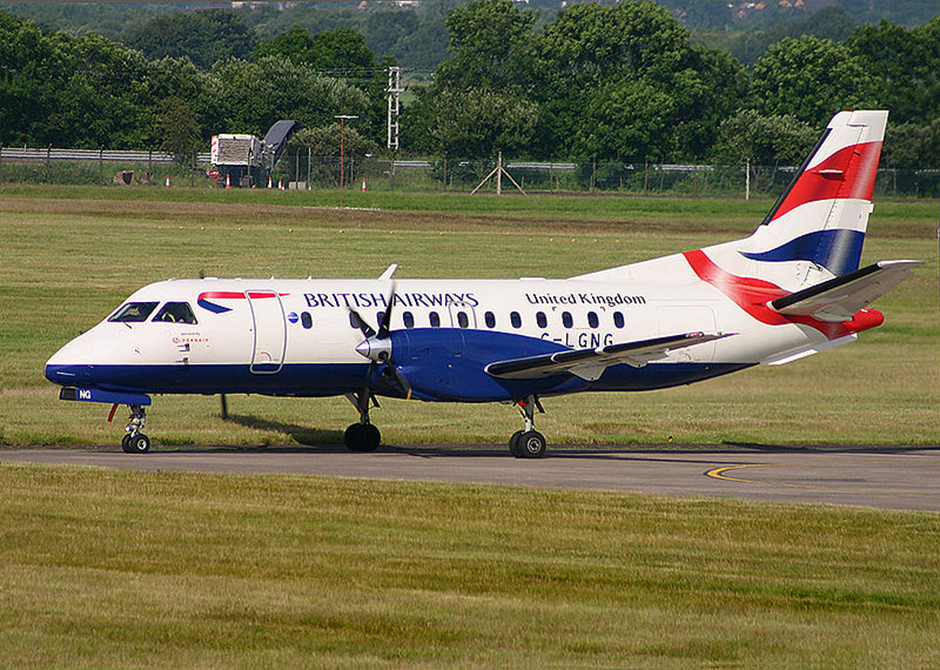
In 2008 the franchise arrangement with British Airways came to an end and Loganair then changed their franchise to Flybe at the time the largest UK regional airline, the Loganair fleet was repainted into the Flybe scheme. 2011 saw Loganair acquire Scot Airlines and their six Dornier 328s these would stay in the fleet for six years before being retired.
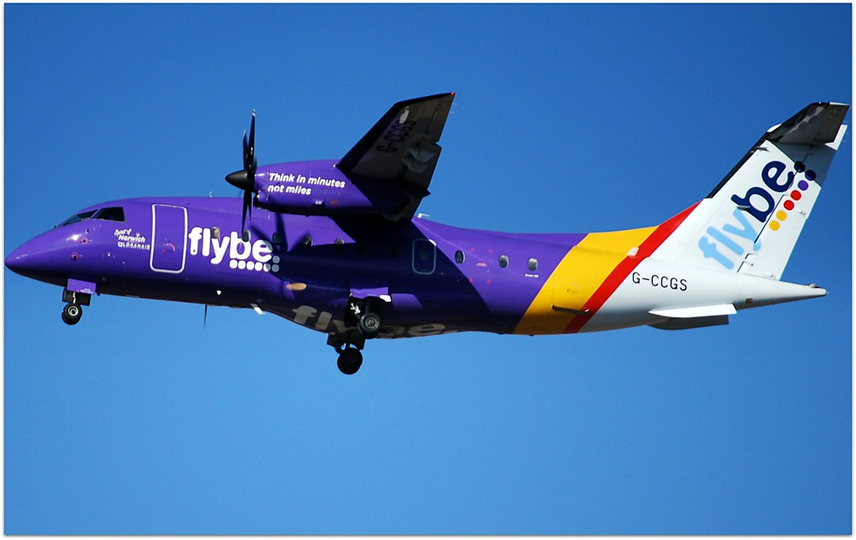
In 2014 Loganair picked up a route from Dundee to Stansted after Cityjet opted out of their London City-Dundee service, this was supported by the government as part of a Public Service route. The following year Loganair was asked to operate two Viking 400 aircraft ( modern build version of the Twin Otter) for the Highland and Islands Airports on routes into Tiree, Campbeltown and Barra ,2015 also saw Loganair become part of Airline Investment Ltd along with BMI Regional.
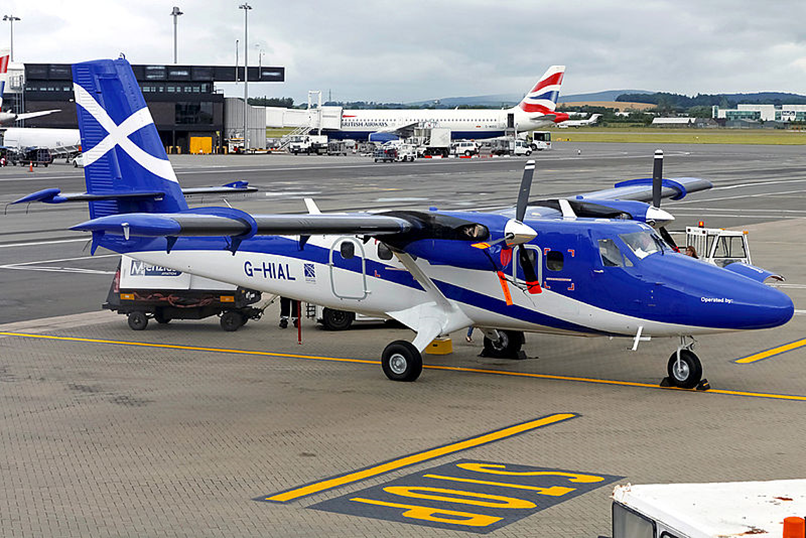
In 2017 it was announced Flybe and Loganair were ending their franchise agreement and the following year Loganair began operating flights under its own name for the first time in 25 years. The first aircraft to carry their new colours was one of their SAAB 340 freighters. Larger SAAB 2000 aircraft had entered service a few years earlier in 2014.
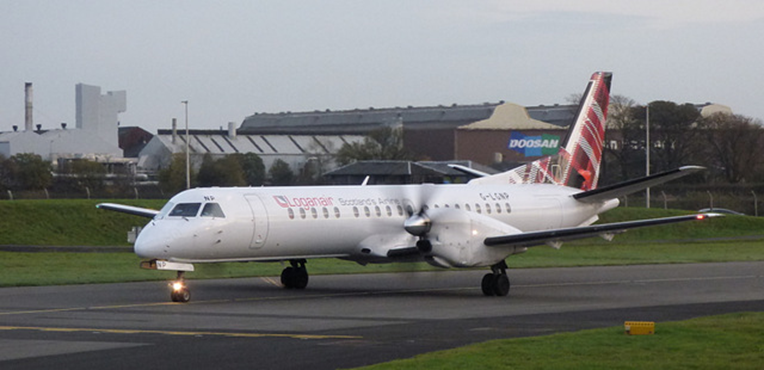
In 2020 Flybe ceased operations and Loganair stepped in to take over several of their routes, they now flew in their own right to 44 destinations covering the UK, Eire, Channel Islands, Isle of Man and Europe. With this huge increase in routes the Dorniers and SAAB 2000s were replaced by ATR -42 and larger ATR-72 aircraft. A number of ERJ 135 and 145 jets that had been flown by BMI Regional on behalf of Loganair had now been transferred to the Scottish airline following BMI Regional’s demise in 2019. Loganair plans to enlarge its fleet further by adding more ATRs to the fleet in the near future.
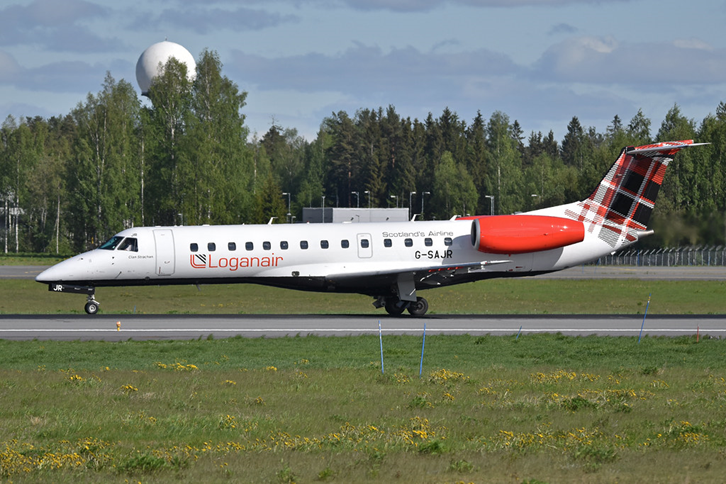
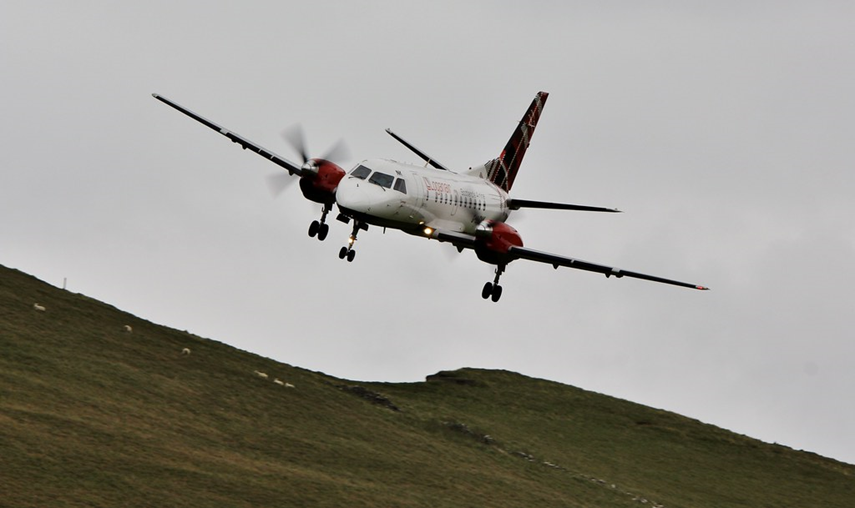
In sixty years the once small air taxi company has now gone through many twists and turns to finally arrive at the point where it is flying a large fleet over a large network of routes and all under its own name, which incidentally is the UK airline name that has been in continuous use the longest. Loganair has truly earned the right to call itself ‘Scotland’s Airline’
‘till the next time Keith
Editors note:
Loganair have recently announced that a new partnership between leading UK regional airlines Aurigny, Blue Islands and Loganair will take off in 2022 as the airlines widen their working relationship to offer seamless travel connections across their route networks, aim to coordinate their benefits for frequent flyers and launch a new programme of co-operation to harness their collective buying power.
Registered Charity No. 285809